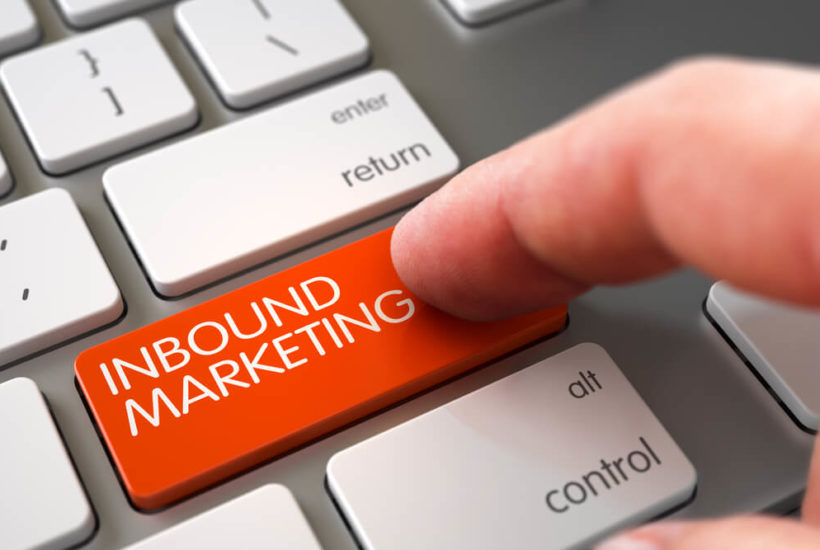Business
Why do enterprises struggle to adopt inbound?
If you want to shift your business to an inbound marketing strategy, here are some pointers to consider.

There’s no question there’s been a fundamental shift in the way consumers make important purchasing decisions in the past decade. The availability of free, high-quality information online has simply changed the game for the way all businesses— small and large — communicate with and sell to consumers.
While this shift in behavior has been a huge boost for small businesses looking to get in on market share, the result for larger businesses is a bit more ominous: They can no longer rely on the strength of their brand and the depth of their pockets alone to close a sale. These companies need to engage in meaningful and relevant dialogue with their potential customers, long before they ever speak to sales.
Though we’ve seen small businesses eagerly jump on the inbound bandwagon and experience great success with it, larger businesses have been much slower and hesitant to adopt inbound. There are a few primary reasons why this has occurred.
Enterprise reservations with inbound
While everyone knows that large companies tend to move more slowly than their smaller counterparts when it comes to making structural or philosophical changes in the way they conduct business, there are some specific driving factors as to why inbound seems to be a sticking point for enterprise companies.
Unruly organizational charts
For large businesses, shifting from an outbound approach to an inbound one can mean some pretty significant structural changes. Large companies tend to have complex org charts with layers of bureaucracy that can substantially inhibit the alignment needed to get sales and marketing on the same page for inbound marketing to be successful. As a result, forward-thinking marketers feel handcuffed by their own organizational structure— unable to actually move the needle for change.
Fear of change from the top
Many enterprise businesses have been around for a long time and gotten where they are with the sales and marketing tactics they’ve used for several decades. Because of this past success, senior executives don’t particularly want to try something new at this point — the risk seems greater than the reward. In this scenario, we often see senior management putting considerable pressure on marketers to bring in more leads primarily using worn-out tactics, like email newsletters.
Deep pockets
Unlike small businesses, many big companies don’t feel the economic strain that forces change. In 2012, The New York Times reported that “while about 96% of pay-per-click advertisers spend less than $10,000 a month, according to AdGooroo…big-budget advertisers spend hundreds of times more. In the first half of 2012, Amazon reportedly spent $54 million, and the University of Phoenix $37.9 million.”
Impressive advertising budgets like these and the ability spend a ton of money on PPC campaigns, retargeting, and other contextual advertising technology brings a steady stream of leads through the door. Additionally, large companies can afford a massive outbound sales team for cold calling. However, this model is simply not cost-effective, nor is it particularly scalable.
Regardless of size, all businesses need to sustain growth to thrive. And while larger companies tend to have deep pockets to help fuel this growth, it’s not new news that there’s a tipping point at which you simply won’t see ROI from your PPC or advertising expenditures. So how do you bridge this gap?
Inbound marketing helps businesses generate demand in a more organic and scalable way. For large businesses, implementing inbound is akin to diversifying your investment portfolio. Much like diversifying your portfolio, putting all your eggs in one (expensive) basket is a bad idea.
And the truth about inbound marketing is this: it’s not going away. It’s the future of demand generation. That’s why it’s so important for a larger business to start moving to inbound now. Systemic change takes time, energy, and patience and can’t be completed overnight. All too often, enterprise businesses wait too long to jump on the technology or innovation bandwagon and are left behind to uncertain outcomes (do AOL, Blockbuster, Barnes & Noble, Kodak, and Blackberry ring a bell?)

5 ways enterprises can get started with inbound marketing
So, how can large businesses begin to shift toward an inbound marketing strategy and modernize their marketing tactics? Below are some ideal steps enterprises can take to fully embrace the inbound philosophy.
1) Start small.
We’ve seen success with implementing inbound marketing for large businesses when they start small, like with a single product or business unit. For example, ShoreTel started testing inbound marketing with shoretelsky.com and was able to prove inbound’s value before introducing a more comprehensive cross-domain strategy.
Start where you can make shifts relatively easily, because there’s some autonomy and less corporate scrutiny. The idea of starting small is not to make major seismic waves across the organization in one fell swoop. Rather, it’s to be able to prove some value and show senior management how it works.
2) Forge alliances.
Inbound marketing works best when you have alignment with sales and IT. However, this can seem very difficult for an enterprise business that’s simply not set up that way. At HubSpot, we’ve seen the most success when you can forge some lines of communication with sales and IT — enough to at least get the buy-in to get the job done.
On the IT side, what we’ve seen work time and time again is to make sure you have the right people involved from the beginning. For instance, if you’re going to need to install tracking code, integrate CRM software, and get a subdomain for your landing pages, get the ball rolling early, and know who is involved in making these requests happen.
From a sales perspective, it’s a matter of making sure you have a plan for your inbound leads. Who gets the new lead notifications? What should sales do with them? As long as there is basic communication around these two areas, you’re good to go.
3) Commit to content.
Inbound doesn’t work without committing to creating valuable content on a regular basis. This is the price of entry. So, identify members of your team who are (or can be) content creators, and give them the time and space they need to be creative. Develop a content calendar, and commit to regular blogging (if you aren’t already doing so). Develop a few premium content offers — or, better yet, repurpose content you already have into content like whitepapers or ebooks. The benefit of starting with content you have is the ability to not have to wait for legal and compliance approval.
4) Prove ROI.
Nothing speaks louder than cold, hard numbers to prove ROI. The best way we’ve seen to prove the value of inbound marketing is through closed-loop reporting — or the ability to see how many website visits become leads and how many leads become customers.
Many large companies already use a variety of analytics software plus their CRM systems for reporting, but in doing so, they’re only really seeing part of the story. Plugging in analytics that
5) Get educated and trained.
Another great way to get buy-in for inbound marketing within your organization is to get professional education and training.
Sometimes, external expertise resonates more effectively with senior management than simply being an internal champion. Whether it’s compiling ebooks and whitepapers about the benefits of going inbound, setting up custom training for your team, or attending inbound events, we’ve seen this approach work very well with larger companies looking to get buy-in to make a change.
It’s no small task to make the shift to inbound marketing for any business. For enterprise businesses, it can seem daunting. However, inertia is simply not a good reason to avoid innovating. In fact, when a business becomes too big to innovate, this is exactly when innovation is needed the most.
Is your enterprise business not on the inbound train just yet? If so, what do you think is holding your company back from adopting inbound?
(Featured image by Tashatuvango via Shutterstock)
—
This article was written by Lindsey Gusenburg for Hubspot.

-

 Africa2 weeks ago
Africa2 weeks agoMorocco Allocates 1.3 Billion Dirhams to Boost Startup Ecosystem Under Digital 2030 Strategy
-

 Crypto1 week ago
Crypto1 week agoAAVE Community Challenges Aave Labs Over Governance and Control
-

 Crowdfunding4 days ago
Crowdfunding4 days agoDeep Learning Italia Launches €400K Crowdfunding to Bridge Italy’s Tech Skills Gap
-

 Biotech2 weeks ago
Biotech2 weeks agoSpain Joins First EU Joint Clinical Assessment Under New Health Technology Regulation




![Kevin Harrington - 1.5 Minutes to a Lifetime of Wealth [OTC: RSTN]](https://born2invest.com/wp-content/uploads/2023/12/kevin-harrington-400x240.jpg)
![Kevin Harrington - 1.5 Minutes to a Lifetime of Wealth [OTC: RSTN]](https://born2invest.com/wp-content/uploads/2023/12/kevin-harrington-80x80.jpg)













